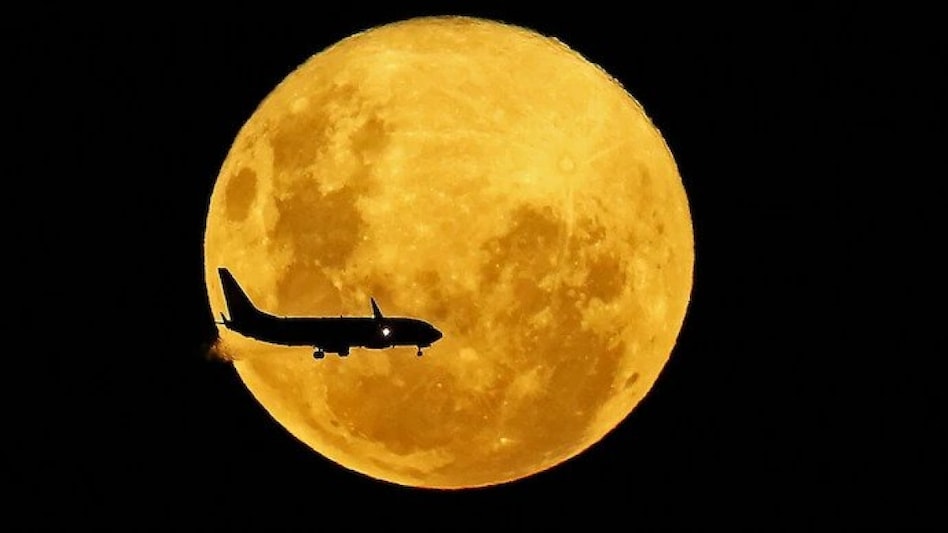 The plasma sheet is a region of hot, charged particles that surrounds Earth
The plasma sheet is a region of hot, charged particles that surrounds Earth
 The plasma sheet is a region of hot, charged particles that surrounds Earth
The plasma sheet is a region of hot, charged particles that surrounds EarthA new study led by planetary scientist Shuai Li from the University of Hawai'i at Manoa suggests that Earth could have helped the Moon get its water.
The study, which was published in the journal Nature Astronomy, found that hydrogen and oxygen ions from Earth's plasma sheet could have combined to form water molecules on the Moon's surface.
Data from India's Chandrayaan-1 mission is said to have revealed that high energy electrons in Earth's plasma sheet may be contributing to the formation of water on the Moon's surface.
The plasma sheet is a region of hot, charged particles that surrounds Earth. It is thought that high energy electrons in the plasma sheet have the potential to interact with the Moon's surface and produce hydroxyl molecules (OH), which are the building blocks of water.
The Chandrayaan-1 mission detected hydroxyl molecules on the Moon's surface, which suggests that high energy electrons in the plasma sheet are indeed playing a role in the formation of water on the Moon.
Earth's plasma sheet, which contains high energy electrons, is believed to play a significant role in weathering processes on the lunar surface. The magnetosphere, an area of space controlled by Earth's magnetic field, serves as a protective shield against space weathering and harmful solar radiation.
The high energy electrons in Earth's plasma sheet is said to interact with the Moon's surface in a number of ways. For example, they can cause sputtering, which is the process of atoms being ejected from the surface of a solid material. They can also cause chemical reactions, which can lead to the formation of new molecules.
One of the most important effects of high energy electrons on the Moon's surface is the formation of water. When high energy electrons interact with the Moon's rocks and soil, they can produce hydroxyl molecules (OH), which are the building blocks of water.
Earlier, scientists mainly focused on the impact of high energy ions on the space weathering of the Moon and other airless bodies. Space weathering is the process by which the surfaces of airless bodies are modified by exposure to the space environment, including the solar wind, cosmic rays, and micrometeoroids.
High energy ions can cause a variety of effects on the surfaces of airless bodies, including sputtering, implantation, and amorphization. Sputtering is the process of atoms being ejected from the surface of a solid material. Implantation is the process of atoms being embedded into the surface of a solid material. Amorphization is the process of a crystalline material being converted into a non-crystalline material.
The solar wind is a continuous stream of charged particles that flows from the Sun. The solar wind contains a variety of high energy ions, including protons, alpha particles, and heavier ions.
The solar wind was thought to be one of the primary mechanisms for water formation on the Moon.
However, Li's research suggests that there may be additional processes or sources of water not directly associated with the implantation of solar wind protons.
"To my surprise, the remote sensing observations showed that the water formation in Earth’s magnetotail is almost identical to the time when the Moon was outside of the Earth’s magnetotail," Li said.
"This indicates that, in the magnetotail, there may be additional formation processes or new sources of water not directly associated with the implantation of solar wind protons. In particular, radiation by high energy electrons exhibits similar effects as the solar wind protons,” Li added.
The recent revelations by Li and her earlier findings on the rusting of iron in the Moon's polar regions due to oxygen in Earth's magnetotail brings out the hidden and unrecognised connections between Earth and its Moon.
Li also looks to research more via the Nasa's Artemis programs, for monitoring the plasma environment and water content on the lunar polar surface as the Moon traverses different phases of Earth's magnetotail.